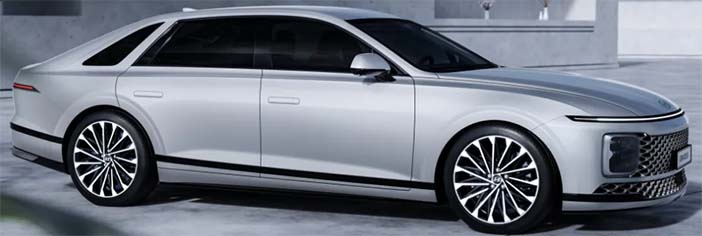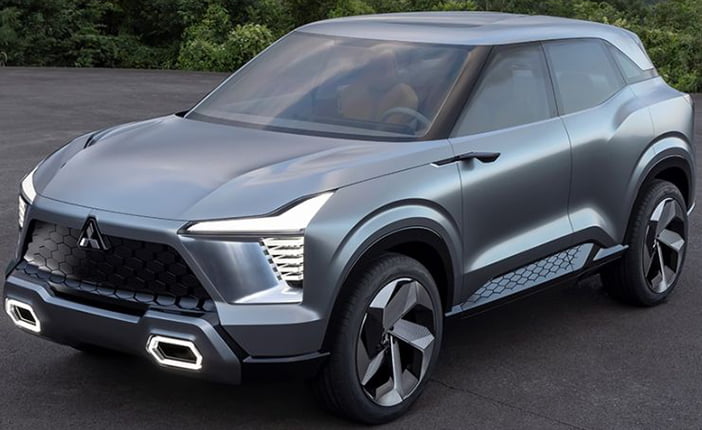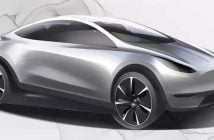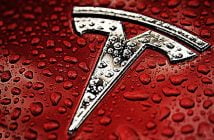+++ BENTLEY is poised to replace its emblematic W12 engine with an even more powerful plug-in hybrid system; one that Matthias Rabe, the company’s head of engineering, hints is likely to be based around a V8. “I want all of our future plug-in hybrids to be more powerful than today’s 12-cylinder”, Rabe told at the launch of the Bentayga EWB in Canada. “I don’t want a reduction in power”. Bentley has 3 existing PHEV powertrains, each using a 3.0-litre V6, but the 449 hp and 464 hp options in the Bentayga and the 544 hp one in the Flying Spur are shy of the output of the venerable W12, which makes 659 hp in the Continental GT Speed and 740 hp in the limited-run Mulliner Batur. Sibling brand Porsche, meanwhile, uses a PHEV powertrain that combines a 136 hp electric motor with the Volkswagen Group’s 4.0-litre twin-turbo V8, making 680 hp in the Cayenne Turbo S E-Hybrid and 700 hp in the Panamera version. This could serve as the basis for similar options in the closely related Bentayga, Continental and Flying Spur. Bentley has confirmed that PHEV mules are currently out testing, as the entire range will offer a plug-in option by 2025. Although Bentley wouldn’t confirm, Rabe hinted that an electrified V8 is on the cards. “We’ve had fantastic 6-cylinder engines in the past, but I think Bentley today is normally either 8-cylinder or 12-cylinder, and a hybrid combined with the 8-cylinder would be a perfect fit”, he said. “Also from the point of view of weight distribution, because you can achieve something like 50:50”. Before a V8 PHEV Bentley arrives, the W12 may well get a spectacular sign-off, because Rabe said the company is toying with the idea of commissioning a higher-performance derivative to commemorate its retirement. “The Batur showed we can go higher. It is good for up to 750 hp”, said Rabe. “For sure we will celebrate the last W12, but the final decision isn’t made whether we commission something. We could do a special series with a little more power. Does it make sense for 200 or 300 cars with a little more performance? It could be done, but it would have to make sense”. +++
+++ Tesla topped registrations of battery-electric vehicles in GERMANY in the first 9 months of this year at nearly 38.500, federal data showed, beating the Volkswagen brand by around 6.000 vehicles. Tesla’s battery-electric registrations jumped nearly 50% from the January-September period last year, while Volkswagen’s dropped 40% to just over 32.300 in line with a broader drop across most of the Volkswagen Group brands in Europe’s biggest car market. Only Audi and Cupra saw an increase in the number of electric cars registered in Germany among Volkswagen Group brands, the data from the federal motor transport authority showed. Globally, Volkswagen Group saw total deliveries of its battery-electric vehicles rise 25% in January-September from a year earlier, figures released by the carmaker last week showed. But supply chain bottlenecks have hit the carmaker particularly hard in Europe, where inflation and rising energy costs are also weighing on demand. Across all vehicle types (combustion engine, hybrid and electric), deliveries of Volkswagen Group vehicles globally fell 12.9% this year, the carmaker reported last week, with Europe the hardest-hit region. “The tense situation of component supply has repeatedly led to adjustments in production. We expect a stabilization of supply over the course of the coming year”, a Volkswagen spokesperson said of the data. Tesla has seen record deliveries globally but also battled with logistical challenges and delivered less in the third quarter than analysts had expected. +++
+++ HYUNDAI ’s European division deep-sixed the Grandeur years ago, but the big sedan lives on in several overseas markets. Known as the Azera in some countries, including its home market of Korea, it enters its 7th generation with a futuristic exterior design that will leave no one indifferent. Up front, the new Grandeur borrows styling cues from the head-turning Staria introduced in 2021. A sedan influenced by a van inspired by a spaceship is admittedly a difficult plot to follow, but bear with me. The front end is relatively low and flat, and it’s characterized by a massive grille flanked by a pair of rectangular headlights. The thin LED strip above the grille accentuates the Grandeur’s width and illustrates Hyundai’s Seamless Horizon design language. Out back, this approach to design brings an elegant curved trunk lid and a second strip of LEDs. Designers bucked the ‘4-door coupe’ trend and gave the Grandeur a relatively upright roof line that clears up a generous amount of interior space. The sheet metal begins to slope towards the trunk above the rear wheels, and this created space for a third side window. Hyundai notes that this feature is a tribute to the original Grandeur, which made its debut in 1986 as a badge-engineered Mitsubishi Debonair. The cabin reflects Hyundai’s ongoing upmarket shift, both in terms of the materials used and in terms of technology. The driver faces a steering wheel inspired by the one fitted to the original Grandeur and a digital instrument cluster connected to the infotainment system’s touchscreen. Look closely and you’ll spot some cool design details: South Korea’s approach to design notably inspired the pattern on the door panels. Real wood trim, aluminum accents, and naturally-dyed leather upholstery add a finishing touch to the upscale look and feel. Hyundai hasn’t released technical specifications, though I’m guessing the engine palette will include 4- and 6-cylinder units. Front-wheel drive will come standard, and all-wheel drive will likely be offered at an extra cost in some markets. More details about the new Grandeur will emerge in the coming months and deliveries are scheduled to start in the second half of 2023 … but not in Europe. Nothing suggests the Grandeur will make a comeback here, where crossovers and SUVs represent the bulk of Hyundai’s sales. +++

+++ MITSUBISHI ’s lineup has dwindled, but its presence is strongest in Asia, where it offers several vehicles not destined for our shores. Its latest concept vehicle previews a vision for a small utility vehicle with beefy styling and a futuristic interior. The XFC Concept is a compact SUV that Mitsubishi calls the “best-suited buddy for an exciting life”. It’s debuting at the Vietnam Motor Show later this month and is initially destined for life in Southeast Asia, though the company says it wants to expand that presence globally. The concept’s styling is a departure for the brand, whose other recent releases haven’t been the easiest vehicles on the eyes (cough, cough, Outlander). Boxy lines and unique lighting are standout visual elements on the XFC, and the rear fender flares give it a muscular stance. Concepts rarely make it to production unchanged, so Mitsubishi is likely to alter the XFC’s fantastic interior before release. The cabin appears to offer a mix of materials and large windows. Mitsubishi says it has class-leading interior space and notes that it focused on making the vehicle as comfortable as possible over rough roads. Flooding is an issue in the XFC’s home region, so Mitsubishi gave it good ground clearance and 4WD modes. Drivers can choose between normal, wet, gravel and mud modes, and Mitsubishi says it developed the new wet mode specifically with Southeast Asian countries in mind. Mitsubishi will launch the XFC in 2023 and says an electric variant is coming down the road. Though it’s still in the concept stage, the automaker plans for the SUV to become a core model for the brand on the global stage, alongside vehicles like its popular Xpander MPV. +++

+++ One of my spy shooters just caught a rather intriguing looking PORSCHE TAYCAN running around on roads outside the Nürburgring. It’s unlike any Taycan we’ve seen before, as it features a massive aero package that looks track day-ready. What this Taycan exactly is will remain rumor and mystery for now, but I have some guesses. Assuming this test car is a reflection of something Porsche will come to market with, there’s a decent chance it adopts the Turbo GT moniker debuted on the Cayenne. With this name, Porsche skirts around the vehicle being a full GT model like the 911 GT3 or Cayman GT4, but it still clearly announces the vehicle’s intentions of being an extreme performance car. The big rear wing does most of the announcing all by itself, though. There’s a mini ducktail underneath the wing, and as you start to look closer all around it, you’ll quickly see that this Taycan means business. Examine the lower rear bumper closely, and a partial diffuser on both sides reveals itself. Further up, the rear bumper features extra winglets on either side. The front bumper is littered with extra aero components, and a lot of it is taped off to make it more difficult to decipher what’s going on. That said, there’s no hiding the fact that this front end is designed with elements to produce far more downforce than the current Taycan. Beyond the aero, this Taycan is rocking Porsche’s carbon ceramic brakes and a massive wheel and tire package. If this model is indeed a Turbo GT or “GT” of some sort, we can expect some powertrain changes to be made in concert with suspension and aero. What the final product will be is still up for debate, but performance beyond that of the current Turbo S would appear to be in order. If you haven’t been thinking about it already, yes, range will take a backseat and suffer for the extra aero applied to this Taycan. How much range it will lose versus its more slippery brethren will remain a mystery for now, though. I sure hope Porsche makes this notably more aggressive Taycan into reality. The current Taycan as it sits now is downright excellent to drive, and this car would just take things even further. +++
+++ The RENAULT 4Ever concept revealed at the Paris motor show previews the brand’s second retro-inspired electric car, following the earlier Renault 5. After the reveal I caught up with Renault Group design executive vice president Laurens van den Acker, who detailed the process of reinventing a classic, the design opportunities afforded by electrification, and the future of Alpine and Dacia styling. Question: After reviving the 5, how was it doing the same for the 4? Answer: “After the 5, we couldn’t not talk about the 4. We have a chance to reinvent our icons like this with the energy transition. They’ve become relevant again. So many memories contribute to them. For many it was their first car to drive, their holiday car, where they had their first kiss. When cars all go EV, they risk becoming banal, but these cars help answer that”, Q: How closely does this concept preview the 4? A: “I love concept cars and have done my share of dream cars, but this is not the style of Luca de Meo, the Group Renault boss. We make a promise and keep to it. With the 5, what you see is what you get. With the 4, it’s still 2 years away, but the upper half is still essentially very close, the lights, the cabin”. Q: Was the 4 an easy car to reinvent? A: “With the 5, it was relatively painless. It just came out the pens of our designers. The 4 was more laborious. The original was not a pretty car! People didn’t buy it for beauty. It took more effort”. Q: Could you have reinvented the 4 and 5 previously as petrol cars? A: “I don’t think we could have done them as ICE cars. You’d have needed a big front overhang, the wheels couldn’t be as big, the turning circle would be impacted. Due to EVs, we can now reinvent icons”. Q: Are you realizing the opportunities of electric cars now in design? A: “At the start, people needed to be reassured by electric cars with familiar looks. People are beyond that, and now the appetite is to see the differences. We notice people want to stand out, for us as designers that is fantastic. There is a hunger for innovation and many new brands. 15 years ago, I’d have thought by now there would be 3 huge multinational companies, but the opposite is true with lots of new brands. This opens up the eyes of consumers to choice”. Q: What clues does the Alpenglow concept car give to Alpine’s future? A: “Luca de Meo says that Alpine should be a cross between Ferrari and Tesla, which is some ambition. The concept will be an inspiration for all the Alpines to follow, lightweight, very sexy, high technology, something close to racing that moves the heart, eyes and emotions”. Q: How can Dacia evolve design-wise? A: “Dacia is a wonderful brand. It’s very in sync with the time. It’s what you need and no more. The essentials are there, and now we give it a flavour with more outdoor spirit. Before the focus was on price, and there was no aspiration. The outdoor spirit gives a chance to make an affordable kind of Jeep or Land Rover”. +++
+++ TESLA reported Wednesday that its third-quarter profit more than doubled from a year ago, fueled by higher vehicle sales and higher prices per vehicle. The Austin, Texas, electric vehicle and solar panel maker said it earned $3.29 billion from July through September. Excluding special items, the company made $1.05 per share, beating Wall Street estimates of $1 per share, according to data provider FactSet. Revenue rose 56% to a record $21.45 billion, but fell just short of estimates averaging $21.98 billion. Tesla stuck with its prediction of 50% annual vehicle sales growth over the next few years, confident that demand will remain strong. “The rate of growth will depend on our equipment capacity, factory uptime, operational efficiency and the capacity and stability of the supply chain”, the company said. But it will take a stellar 4th quarter sales performance to reach the 50% goal. Earlier this month, Tesla reported vehicle sales that rose 35% for the July-September period compared to the second quarter as the company’s huge factory in China got past supply chain issues and pandemic restrictions. The company sold 343.830 cars and SUVs in the third quarter compared with 254.695 deliveries made from April through June. Tesla said it produced 365.923 vehicles in the July-September period. Analysts have questioned whether Tesla is experiencing waning demand for its vehicles. So far this year, the company has delivered 908.573 vehicles. Last year, the company delivered just over 936.000 vehicles. To increase sales by 50% over last year, which would amount to about 1.4 million vehicles, the company would have to sell more than 490.000 vehicles in the 4th quarter. But Tesla said it had higher-than-usual numbers of vehicles in transit at the end of the third quarter that will count as sales once they reach customers. It said it’s becoming harder to find transportation capacity at a reasonable cost when it needs to move vehicles from its factories to its customers. The company said that it remains focused on increasing vehicle production as fast as it can by raising the weekly build rate in Fremont, California, and Shanghai ,while making progress at new factories in Texas and Germany. But it said logistics and parts supply bottlenecks “remain immediate challenges, although improving”. Battery supply constraints, Tesla said, will be the main limiting factor to electric vehicle market growth in the medium and long terms. Still, the company said initial deliveries of its Semi truck will start in December. Shares in Tesla were down about 3% in extended trading Wednesday after the company’s third-quarter sales missed Wall Street estimates. The stock has lost 37% so far this year, burdened by CEO Elon Musk’s $44 billion bid to buy Twitter. Musk earlier backed out of the purchase, contending that Twitter misrepresented the number of fake “spam bot” accounts on its platform. Twitter sued, and a Delaware judge has given both sides until October 28 to work out details. Otherwise, there will be a trial in November. +++



